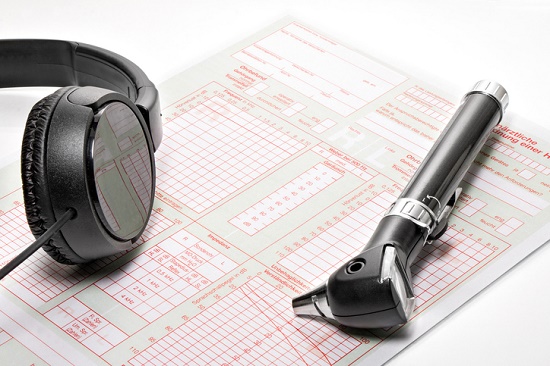
The hearing test truly is the easy part. The tricky part is acknowledging your hearing loss and actually booking the hearing test in the first place.
You have most likely read the statistics by now: 48 million individuals in the US suffer from hearing loss but only a minor fraction actually do something about it, and only 20 percent of people who could reap benefits from hearing aids actually use them.
So if you’ve already set up your hearing test, congratulations, you’ve already overcome the biggest barrier to healthier hearing.
The hearing test, as you’ll witness, is an easy, non-invasive procedure that will identify the level of your hearing loss to help institute the most suited treatment course.
After you first arrive at the office, you’ll start by submitting some paperwork. Then, you’ll meet with your hearing care professional to discuss your hearing health history.
Your Hearing Health History
Your hearing loss, if present, can be triggered by direct exposure to loud noise, the natural aging process, or by an underlying ailment. You’ll want to rule out any underlying medical conditions prior to moving on to the actual hearing exam.
If you have an impaction of earwax, for example, you could be hearing better within minutes after a professional cleaning. The presence of any other conditions will be examined and the applicable referral made, if necessary.
After examining your basic medical history, you’ll discuss your exposure to loud sounds, your hearing loss symptoms, and exactly what you wish to achieve with better hearing.
It’s critical to determine possible causes, how symptoms are influencing your life, and how better hearing will improve your life, which is in the end the whole point. Be skeptical of the practitioner that doesn’t appear to care about the main reasons why you desire to enhance your hearing in the first place.
The Hearing Test
There’s one more step before beginning the hearing test: the visual investigation of the ear with a device known as an otoscope. This will help in ruling out any problems with the ear canal, the eardrum, or the excessive buildup of earwax.
Next, you’ll be escorted to a sound-treated room with your hearing care professional. You’ll be asked to put on headphones, and the specialist will begin to play you some sounds.
You will be presented with a variety of sounds at different frequencies, and you’ll be asked to identify the quietest sounds you can hear at each pitch. This is called your hearing threshold, and the hearing care provider will log these values on a diagram known as an audiogram.
The hearing exam will probably also entail speech testing, where you’ll be instructed to repeat the words presented to you. Assorted types of words, delivered at different volumes with and without background noise, will be presented. This will help determine if hearing aids can help you with speech understanding.
At the conclusion of the testing, your hearing care provider will discuss the results with you.
Reviewing Your Hearing Test Results
Referring to your audiogram, your hearing care professional will now review your hearing in both ears. Contingent on the results, your hearing will be characterized as normal or as exhibiting mild, moderate, severe, or profound hearing loss.
If a hearing loss is present, the next move is discussing your treatment options. Seeing that there are no present medical or surgical treatments to restore hearing damage, this means assessing your hearing aid options.
Current hearing aids come in an assortment of shapes, sizes, and colors, at different price ranges with a number of advanced features. In picking out your hearing aids, it’s important to work with a competent hearing care professional for three main reasons:
- They can help you find the ideal hearing aid model to satisfy all of your goals.
- They can help you identify the advanced features you need—as well as with the ones you don’t—at a price that complements your budget.
- They can program your new hearing aids to amplify only the sounds you have difficulty hearing—identified by the hearing test—ensuring optimal sound quality.
And that’s it, a fast, simple procedure in return for a lifetime of healthier hearing. We’d say that’s a very good deal.
We look forward to seeing you!
